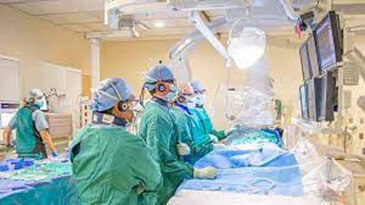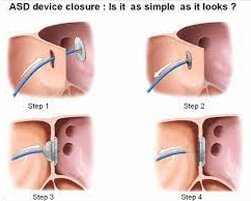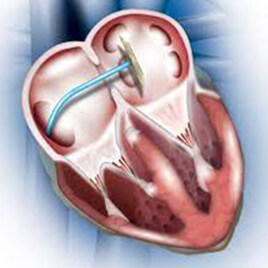Non Surgical Alternatives in treatment of Congenital Heart Defects
November 8, 2022 | Contributed by R. Srivatsan
Congenital Heart Defects represent one of the most common birth defects in the world. They are structural abnormalities affecting the functioning of the heart.
One of the common methods for treating Congenital heart Defects was open heart surgery. However, with the advancement in technology, doctors are now able to provide heart hole treatment without surgery to the patients. These are non-invasive procedures performed in the Cath Lab.
Not all types of Congenital Heart Defects can be treated by this method. Only a small subset of defects can be treated by heart hole treatment without surgery.

In non-invasive Cath Lab procedures a Catheter or a Guide wire is mounted with a device and is pushed through the patient’s artery from the groin region. The device is then inflated and placed above the hole in the heart. Similarly for valves which are narrow or stenosed, a balloon dilatation procedure is carried out to dilate the obstruction during cardiac catheterization to treat stenosis.
The advantage is that these procedures can be carried out as a one-day admission to hospital or in newborns, shortly after birth. The patients do not require long hospital stay. Generally, they are discharged the following day after the procedure. The children have no scar. The recovery is also faster as compared to an open-heart surgery where the average length of hospital stay stay is 5 to 7 days.
Some of the types of Congenital Heart Defects that can be closed by this method are as follows:
Patent Ductus Arteriosus:
The ductus arteriosus is a fetal blood vessel connecting the aorta with the pulmonary artery. This vessel usually closes in the first days of life, however, if it remains open, this abnormal connection is called patent ductus arteriosus (PDA). Traditionally, the treatment was cardiac surgery, but currently closure of majority of all PDAs come under the heart hole treatment without surgery category using the catheter technique, where a device is inserted into the blood vessel through a catheter to close it.
Atrial Septal Defects :

The atrial septal defect (ASD) is a hole in the atrial septum that allows a portion of blood returning to the left atrium to pass to the right atrium, right ventricle, and pulmonary arteries, placing additional pressure on these heart structures as well as the lungs. Certain types of ASD’s are now closed interventionally by the implantation of a permanent device through a catheter that remains and eventually becomes part of the heart wall. As with the other interventional procedures, the ease of implantation, very high success rates matching surgery with minimal morbidity has made ASD closure a heart hole treatment without surgery, suitable for patients of all ages.
Only certain kinds of Atrial Septal Defects like Ostium secundum Atrial Septal Defects are amenable to non-surgical closure, meaning that there are still some cases that cannot be treated using transcatheter techniques. Occasionally, an ASD which is in a very unusual location or is unusually large or which does not have continuous margin are treated surgically. With advances in techniques and devices, these occurrences are decreasing.
Ventricular Septal Defects
New interventional techniques have been developed in the last few years to close ventricular septal defects (VSDs), holes between the ventricles of the heart, with implantable devices. Overall, heart hole treatment without surgery are just as effective or more effective or just as safe or safer than surgery.
Emerging Areas in Interventional Cardiology
Valves are now being replaced percutaneously in the catheterization laboratory, rather than in surgery. The commonest valve to be replaced in Pulmonary Valve, typically in children who have undergone Tetralogy of Fallot Correction or have been operated for Pulmonary Atresia. Research is going to develop Aortic Valve which can be replaced percutaneously. The main draw back of this method is that the valve costs are very high and it is beyond the reach of a common person in developing countries like India. With passage of time and with mass adaption of these procedures, the cost of valve will come down in the future.
In near future for Heart hole treatment without surgery more biodegradable devices will be available that will allow the normal heart to grow, encompass, and re-absorb these devices.
Hybrid Procedures:

Another technique which is of growing interest for Heart hole treatment without surgery is hybrid procedures.
There will be a coordinated effort between the pediatric cardiac surgeons and interventional cardiologists to perform hybrid procedures, where the surgeon and cardiologist will be working together in the same room to deliver respite for the patient in the most efficient, and accurate way. The goal is to build hybrid rooms where both the surgeon and the cardiologist can work easily together.
Genesis Foundation supports the treatment of less privileged children with Congenital Heart Defects, currently having partnership with 34 hospitals, Pan India. These hospitals offer Heart hole treatment without surgery.
References :
Non-surgical Alternatives in treatment of Congenital Heart Defects:
A report by William E Hellenbrand

